How Does Crop Rotation Benefit Your Garden?
Crop rotation can be an effective way to improve soil health, reduce pest and disease pressure, and increase overall crop productivity and profitability. However, it requires careful planning and management, and it is important to choose the right crops for your specific climate, soil type, and growing conditions.
Crop rotation is a method of growing different crops in a particular field or garden in a systematic manner over a period of time.
In a crop rotation system, crops are grouped into families based on their growth habits, nutrient requirements, and susceptibility to pests and diseases. Each year, a different family of crops is planted in a specific field or garden to avoid monoculture, reduce soil-borne diseases, and improve soil health by adding organic matter and other beneficial soil microorganisms.
For example, a common crop rotation system might include planting a legume crop one year, such as beans or peas, which add nitrogen to the soil, followed by a root crop, such as carrots or potatoes, which do not compete with the nitrogen-fixing legumes. This is followed by a cereal crop, such as wheat or barley, which can help to build up the soil structure, and then by a leafy crop, such as spinach or lettuce, which can help to prevent soil erosion.
Crop rotation requires careful planning and management, and it is important to choose the right crops for your specific climate, soil type, and growing conditions.
Improve soil health: By rotating crops, the soil can be replenished with essential nutrients, and soil structure can be improved by adding organic matter.
Reduce pest and disease pressure: By rotating crops, pests and diseases that are specific to certain crops can be reduced, as they are not able to build up in the soil over time.
Increase crop productivity: By rotating crops, soil-borne diseases can be reduced, and soil health can be improved, leading to increased crop productivity and yield.
Increase profitability: By improving crop productivity and reducing pest and disease pressure, crop rotation can help to increase the overall profitability of a farm or garden.
Avoid monoculture: By rotating crops, monoculture, or the cultivation of a single crop in a field or garden, can be avoided, reducing the risk of crop failure and increasing overall crop diversity.
Maintain soil fertility: By rotating crops, soil fertility can be maintained, as different crops have different nutrient requirements, and rotating crops can help to balance soil nutrients and improve soil health.
Prevent soil erosion: By rotating crops, soil erosion can be prevented, as different crops have different root systems and can help to stabilize the soil and prevent erosion.
Crops are typically grouped into families for the purpose of crop rotation. Plants within families share specific enemies in terms of pests and diseases and also have similar maintenance requirements. The following are some common crop families used in crop rotation systems:
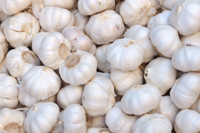 |
Allium or Onion Family (Liliaceae):
Asparagus, Chives, Garlic, Hyacinth, Leeks, Lilies, Onions, Ramps, Scallions, and Shallots. |
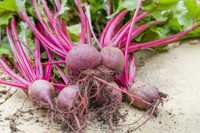 |
Beet Family – Chenopods (Chenopodiaceae):
Amaranth, Beet, Lamb’s Quarters, Spinach, Sugar Beet, Swiss Chard, Quinoa, and Redroot Pigweed. |
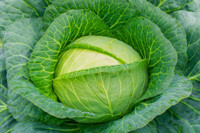 |
Cabbage Family – Crucifers – Brassicas (Brassicaceae):
Arugula, Brussels Sprouts, Broccoli, Cabbage, Chinese Cabbage (bok choy), Cauliflower, Collards, Garden Cress, Horseradish, Kale, Kohlrabi, Mustard (greens), Mustard (seed), Nasturtiums, Radish, Rapeseed (canola), Rapini, Rutabaga, Turnip, Water Cress. |
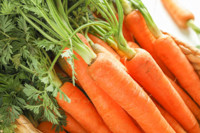 |
Carrot Family – Umbellifer (Apiaceae):
All plants have umbrella-like flowers (umbels) composed of hundreds of tiny florets. They include Angelica, Anise, Caraway, Carrot, Celeriac, Celery, Chervil, Cilantro, Coriander, Cumin, Dill, Fennel, Lovage, Parsley, Parsnip, Wild Carrot (Queen Anne’s Lace). |
 |
Cucumber Family – Cucurbits (Cucurbitaceae):
Cantaloupe, Cucumber, Gourd, Honeydew, Muskmelon, Pumpkin, Squash, Watermelon, and Zucchini. |
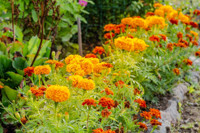 |
Daisy Family – Aster Family (Asteraceae)
Artichoke, Calendula, Chamomile, Chicory, Endive, Escarole, Lettuce, Marigold, Raddichio, Sunflower, Tansy, Tarragon, Wormwood, Yarrow. |
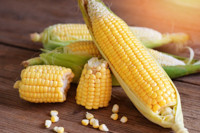 |
Grain Family – Cereal Family – Grass Family (Poaceae):
Corn, Wheat, Barley, Oats, Sorghum, Rice, Millet, Rye, Ryegrass, and Sorghum-sudangrass. |
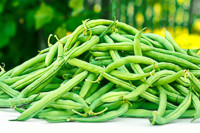 |
Legume Family (Fabaceae):
Alfalfa, Beans, Chickpeas (garbanzo beans), Clovers, Cowpea, Castor Bean, Fenugreek, Jack Bean, Lentils, Lespedeza, Lupine, Partridge Pea, and Peas. One of the key benefits of growing legumes is their ability to improve soil health and add nitrogen to the soil. |
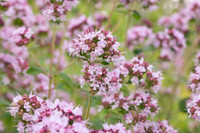 |
Mint Family (Lamiaceae):
Basil, Bee Balm, Bergamot, Calamint, Catnip, Hyssop, Lavender, Lemon Balm, Marjoram, Mint, Oregano, Rosemary, Sage, Savory, Thyme. |
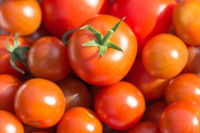 |
Nightshade Family (Solanaceae):
Eggplant, Peppers, Petunias, Potatoes, Tobacco, Tomatoes, and Tomatillos. They are considered heavy feeders, requiring many nutrients to grow well. |
By rotating crops within and between these families, soil health can be improved, pest and disease pressure can be reduced, and overall crop productivity and profitability can be increased.
There are several key rules to follow when planning a crop rotation:
Crop families: Crop rotation should include different crop families to balance soil nutrients, reduce pest and disease pressure, and improve soil structure.
Crop sequence: Crops should be rotated in a specific order, so crops with similar nutritional requirements and pest and disease pressures are not planted in the same location year after year.
Length of rotation: The length of the crop rotation cycle depends on the specific needs of each crop family, as well as local climate, soil type, and growing conditions. A common length for a crop rotation cycle is 4 years, but this can vary.
Rotate heavy feeders with soil builders and light feeders: The soil will rebuild its supply of nutrients.
| Nutrient Requirements | |
| Light Feeders | Beets, Carrots, Garlic, Horseradish, Leeks, Onions, Potatoes, Radishes, Sweet Potatoes, Turnips, Tomatillos |
| Moderate Feeders | Brussels Sprouts, Cabbage, Cauliflower, Collards, Kohlrabi, Kale, Lettuce, Parsley, Spinach, Swiss Chard |
| Heavy Feeders |
Artichokes, Broccoli, Celery, Corn, Cucumbers, Eggplant, Garlic, Melon, Parsnips, Peppers, Pumpkins, Squash, Strawberries, Tomatoes |
| Soil Builders | Alfalfa, Beans, Chickpeas (garbanzo beans), Clovers, Cowpea, Castor Bean, Fenugreek, Jack Bean, Lentils, Lespedeza, Lupine, Partridge Pea, and Peas |
Soil health: Regular soil testing should be conducted to assess soil nutrient levels and pH and to ensure that soil health is maintained over time.
Record keeping: It is important to keep records of crop rotations, including the crop families, crop sequences, and rotation length, to monitor the rotation’s success and make adjustments as needed.
Local considerations: It is important to consider local climate, soil type, and growing conditions when planning a crop rotation and to consult with a local horticulturist or agricultural extension office for specific recommendations for your area.
Exceptions to crop rotation: perennial vegetables and herbs shouldn’t be moved each year since they stay in the ground year-round (e.g., rhubarb, asparagus, mint)
Rules to keep in mind:
| Year | Bed 1 | Bed 2 | Bed 3 |
| 1 | Potatoes | Legumes, Onions, Roots | Brassicas |
| 2 | Legumes, Onions, Roots | Brassicas | Potatoes |
| 3 | Brassicas | Potatoes | Legumes, Onions, Roots |
| Year | Bed 1 | Bed 2 | Bed 3 | Bed 4 |
| 1 | Legumes | Brassicas | Potatoes | Onions, Roots |
| 2 | Brassicas | Potatoes | Onions, Roots | Legumes |
| 3 | Potatoes | Onions, Roots | Legumes | Brassicas |
| 4 | Onions, Roots | Legumes | Brassicas | Potatoes |
Gardens by Design, Shutterstock
Create a membership account to save your garden designs and to view them on any device.
Becoming a contributing member of Gardenia is easy and can be done in just a few minutes. If you provide us with your name, email address and the payment of a modest $25 annual membership fee, you will become a full member, enabling you to design and save up to 25 of your garden design ideas.
Join now and start creating your dream garden!
Create a membership account to save your garden designs and to view them on any device.
Becoming a contributing member of Gardenia is easy and can be done in just a few minutes. If you provide us with your name, email address and the payment of a modest $25 annual membership fee, you will become a full member, enabling you to design and save up to 25 of your garden design ideas.
Join now and start creating your dream garden!